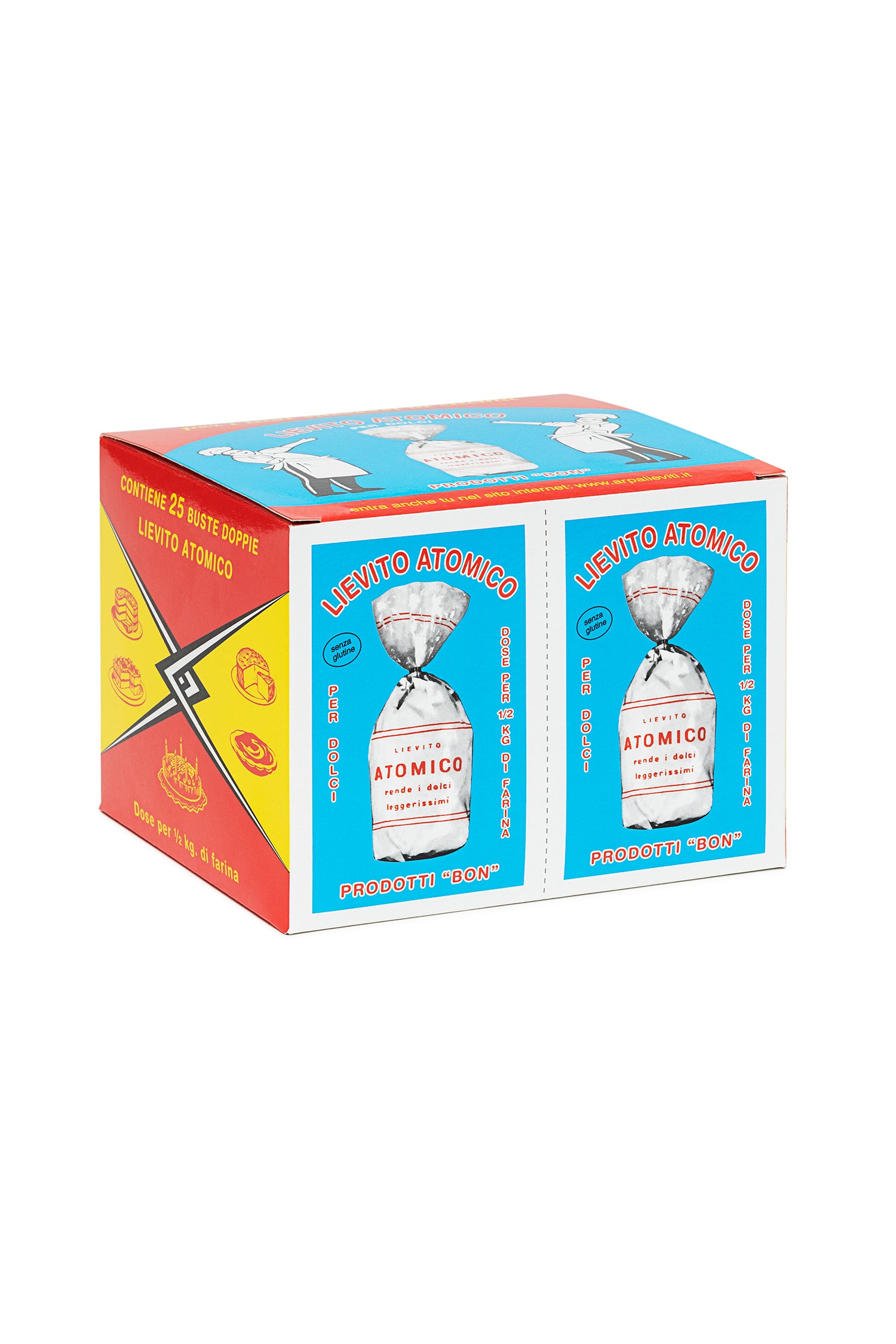Every great pastry chef would say that anyone who doesn't know how to prepare custard will never know how to prepare any dessert. NEVER.
It would seem like a slightly too categorical position, yet if you think about it, custard is truly the basis for many desserts. Its preparation is simple, but it hides pitfalls that could make our cream a terrible culinary disaster.
It would seem like a slightly too categorical position, yet if you think about it, custard is truly the basis for many desserts. Its preparation is simple, but it hides pitfalls that could make our cream a terrible culinary disaster.
- Lumps : they are the first thing to avoid. Let's be objective: lumps are terrible. Seriously: “I hope you can eat lumps of potato starch” could become a powerful expletive.
- THE DENSITY : it is not easy to get the right consistency, especially because we have to consider the final use of our cream. To fill a sponge cake, a slightly more liquid custard would be preferable, so that it can slightly moisten the cake; to enjoy the custard with a spoon, however, it is preferable that it has a good consistency, but that it is not excessively firm, since as it cools the cream hardens a little.
- LEMON : how much to put? Oh well...that's a good question! Generally in recipes there is a hasty "zest of a lemon" but it is obvious that everyone then has to adjust a little on their own. First of all, it depends on the quantity of custard we want to obtain, so if we use, for example, 2 egg yolks, naturally using a whole lemon would be too much. It then depends on the use you want to make of the vanilla: if we put too much lemon, the vanilla aroma would not stand out. Finally, well, obviously we will also need to consider the omnipresent "personal taste" factor.
In short, knowing how to prepare custard well is the first step towards acquiring good manual skills, but it is also an excellent way to practice taste and to learn how to adjust how thick a mixture should become based on our purposes.
Thickeners: the ingredients that transform eggs and milk into custard
If you need a firm and soft cream or if your soup is too thick and you need to adjust the mix a little, there are two phenomenal ingredients that have always been used. We are talking about corn starch and of potato starch . Both starch and starch are used as thickeners both in the preparation of sweet creams, but also in sauces and veloutés. They are truly an excellent help in the kitchen and for this reason they are widely used by lovers of the culinary art. Only if we add them to eggs and sugar, we also get our custard, otherwise we would only have a simple eggnog. But how to use them? What is the difference between the two?
Corn starch
- You can also find it under the name “meizena”
- It comes from corn that is ground into a stew. Proteins, fibers and fats are removed from it and only the starch is left.
- It always adds in cooking , as it goes loose in water
Potato starch
- You can also find it under the name “potato starch”
- It comes from the potato, which is dried and ground
- It does not need to be dissolved and can be added before cooking for example in puddings.
Amount of corn starch and potato starch in the custard
The quantities of corn starch and potato starch to be used in the custard are the same. For both they are added 40g per 500 ml of milk .
Many creams are obtained from the custard: a question of additions
It is said that custard is the mother of all creams. At this point the eggnog would say: << Hey! I was born first! I am the mother of all creams!>>. All right, little eggnog, we'll give it to you: if you were born first. But how many children do you have? Because custard has so many of them and we can't say the same thing about you.
But let's leave the eggnog to calm down for a moment and let's get back to us. We were saying that custard has a lot of beautiful children. In fact, by adding one or more ingredients to it, different creams are obtained. ...Well, if you think about it, rather than children we could be talking about a hyper-enhanced custard. A bit like a fusion between Aladdin's Genie of the Lamp and Merlin the Wizard. Or the Genie of the Lamp and Mulan. Or the genius of the Lamp and Mufasa... some truly very powerful phantasmagorical creams...
But enough fantasizing about the super power of creams, let's see what they are instead. And if you want to remember them, the trick is simple: just do some addition.
But let's leave the eggnog to calm down for a moment and let's get back to us. We were saying that custard has a lot of beautiful children. In fact, by adding one or more ingredients to it, different creams are obtained. ...Well, if you think about it, rather than children we could be talking about a hyper-enhanced custard. A bit like a fusion between Aladdin's Genie of the Lamp and Merlin the Wizard. Or the Genie of the Lamp and Mulan. Or the genius of the Lamp and Mufasa... some truly very powerful phantasmagorical creams...
But enough fantasizing about the super power of creams, let's see what they are instead. And if you want to remember them, the trick is simple: just do some addition.
- CUSTARD CREAM + CHANTILLY CREAM + JELLY = DIPLOMATIC CREAM
- CUSTOM CREAM + BUTTER = MOUSELLINE CREAM
- CUSTARD CREAM + CHANTILLY CREAM = MADAME CREAM
- CUSTARD CREAM + LEMON JUICE = LEMON CREAM
- CUSTARD CREAM + ITALIAN MERINGUE = CHIBOUST CREAM
- CUSTARD CREAM + ALMOND CREAM = FRANGIPANE
- CUSTARD CREAM + DARK CHOCOLATE = CHOCOLATE CREAM
And now… a bit of history! Who invented custard?
After so much talk about custard cream, we couldn't remain silent about its birth. It's always right to give honors back to those responsible and in this case we are talking about a true pastry genius. The inventor of custard was, coincidentally, a Frenchman. In his now very famous cooking dictionary, one of the first in the world, The royal and bourgeois chef The first recipe for this dessert brings us back to 1705. Its name is François Massialot and he was an important chef in the service of dukes, marquises and illustrious cardinals. He was a true culinary genius and, in addition to custard, he is also remembered for having created very innovative methods. One of these is to extract gum tragacanth from legumes to create an extremely versatile and malleable sugar paste. Thanks to the addition of natural dyes, such as saffron or blue iris, he was able to create magnificent, truly spectacular decorative flowers with this paste. Oh yes, a dessert as emblematic as custard could only be the fruit of ingenuity and a passion for experimentation. Thanks Francois!
Custard: the recipe
Now we know a lot about custard, yet we are missing a very small fundamental step to know everything. How you do it? Small step a fife, you might say. And for good reason. So let's try our hand at this delicious recipe, because if we never put it into practice, we will do very little with theory.
Ingredients for the custard
- 500 ml of milk
- 5 egg yolks
- 150 g of sugar
- 40 g of corn starch or potato starch or 1 sachet of custard mix
- 2 vanilla pods (if you haven't used the preparation)
- About ½ lemon zest
Preparation
Heat the milk, lemon zest and vanilla pod seeds (add the vanilla only if you are not using the custard mix) in a saucepan until boiling. In the meantime, beat the egg yolks until they become foamy. Now add the sugar and then the starch or the preparation. As soon as the milk boils, remove the lemon zest. Remove the saucepan from the heat, add all the ingredients and put it back on the low heat. Mix continuously with a whisk until the cream is very firm.
Grandma's tricks for custard: preparation and storage
- Choose the whole milk it will make the pastry even creamier
- Add a pinch of salt to the yolks it will enhance the flavor of the cream and tone down the strong flavor of the egg
- Sift the thickener chosen and pour it little by little into the egg and sugar mixture, it will help you avoid lumps
- Far cool down custard before serving is always recommended. Yes, the smell of freshly cooked cream is irresistible, but the flavors of the pastry are enhanced once cold.
- Cover up always the custard with the transparent film during cooling. In this way the typical "skin" will not form.


